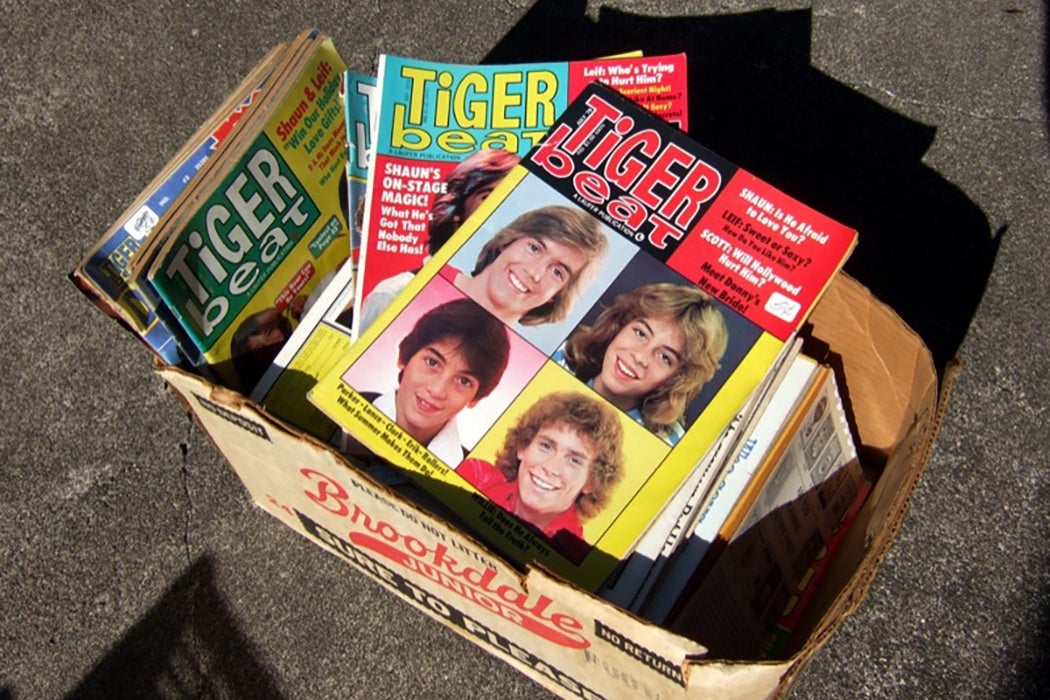George Michael. Anthony Michael Hall. Michael Jackson. No matter your personal teenage poison (and even if his name didn’t include “Michael,”) there were plenty of boy idols to be found in the pages of ‘80s teen magazines like Tiger Beat and Superteen—magazines that, Perry Nodelman asserts, taught the tweens of the ’80s about love and sexuality.
Writing in 1986, Nodelman lays out a vision of teen boy-craziness that is entirely of its era. Citing quotes like “Gorgeous is the first word you think of when you see Rob Lowe. His cornflower blue eyes, chiseled face, and muscular frame make you tremble inside,” Nodelman tracks the effusive language of these teen magazines, noting that “the way the information is presented makes its purpose clear: to encourage readers to find these men desirable.”
Nodelman compares the content of teen magazines aimed at girls—most of whom were younger than teens—to that found in boy-focused magazines about wrestling or comic books. While boy-oriented magazines provided powerful male role models, girls’ magazines focused their gaze at powerful males while bringing iconic female figures like Madonna down to earth and treating them as every-girls.
By focusing on youthful men, magazines like Tiger Beat allowed readers “who are newly aware of their new sexuality…but who are still too young to date, a focus for their interest in sexuality and in maleness.” Real details about fantasy males like Simon Le Bon showcased the favorite foods and even shoe sizes; declarations of how much boy idols longed for ordinary girls to love made them seem accessible and even attainable. At the same time, the magazines laid out heteronormative values and emphasized that submissive, attentive women always got the guy.
But Nodelman found another fascinating facet of these magazines: the way in which they inverted the male gaze. By putting teenage girls in the position of viewer and putting men in pinup-style poses similar to those used by women in many more overtly sexual publications aimed at men, teen magazines put girls in charge. The magazine’s ideal reader may have encountered content that encouraged her to be docile and passive, writes Nodelman, but “she really is not so weak after all: in imagining her own submissiveness, she can possess, and get power from possessing.”







